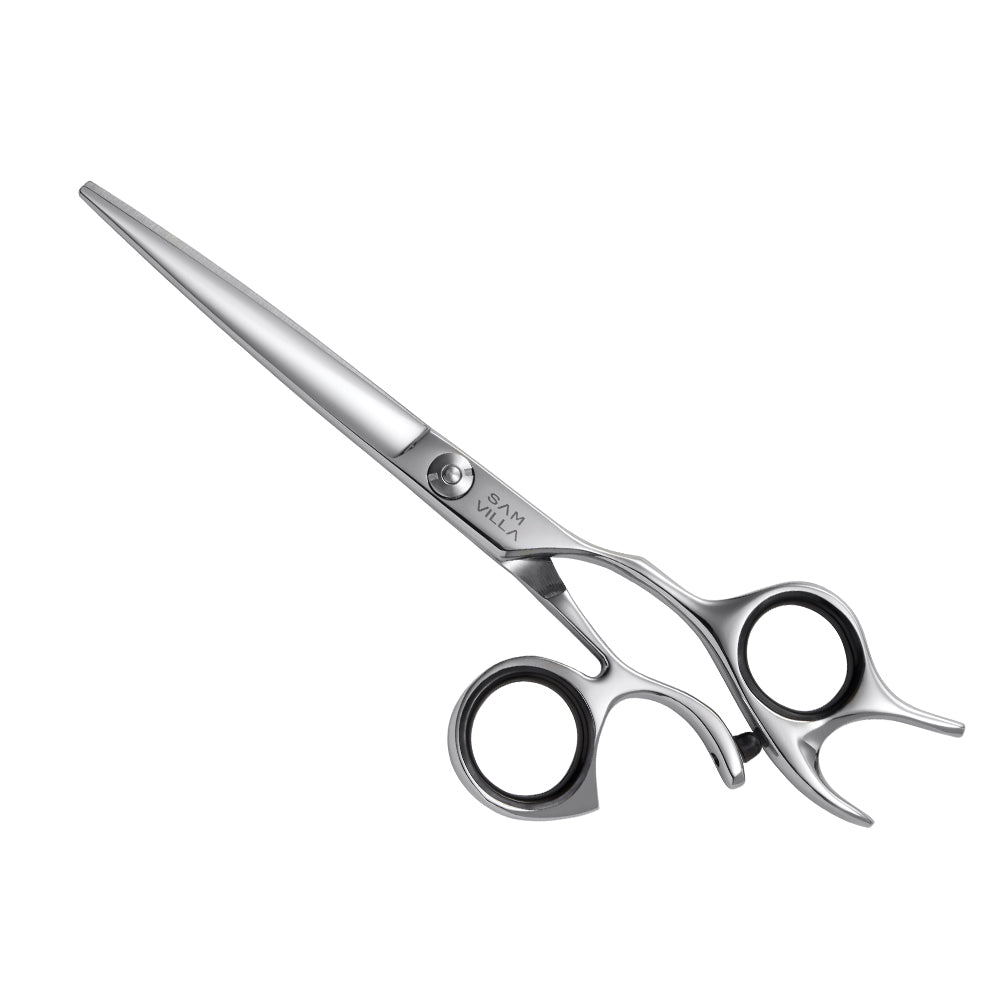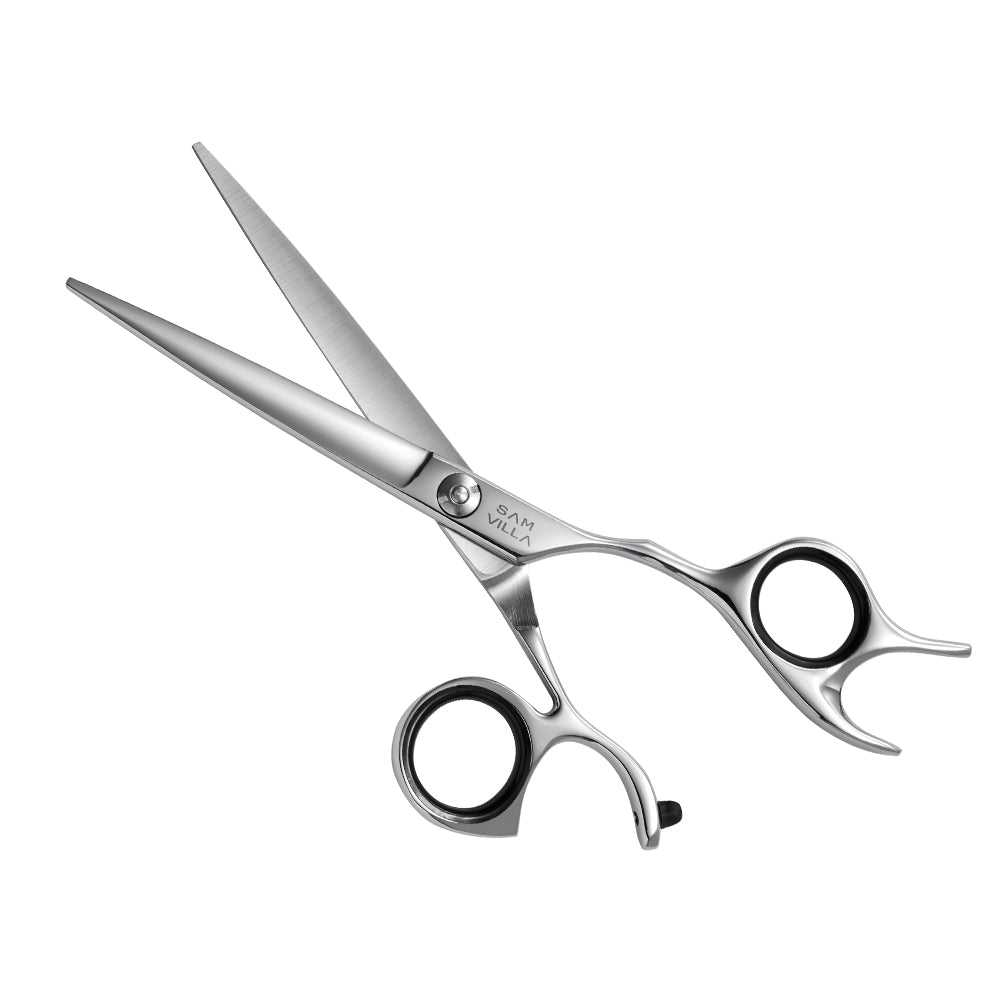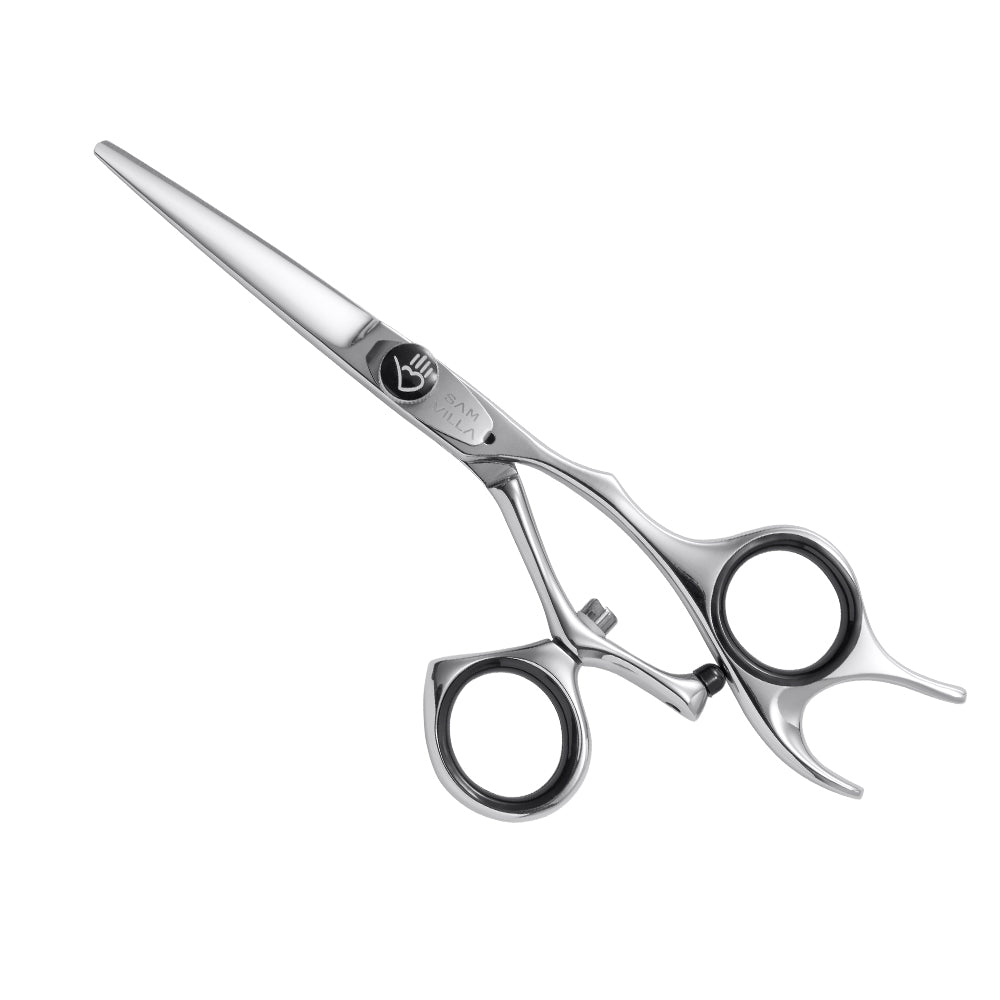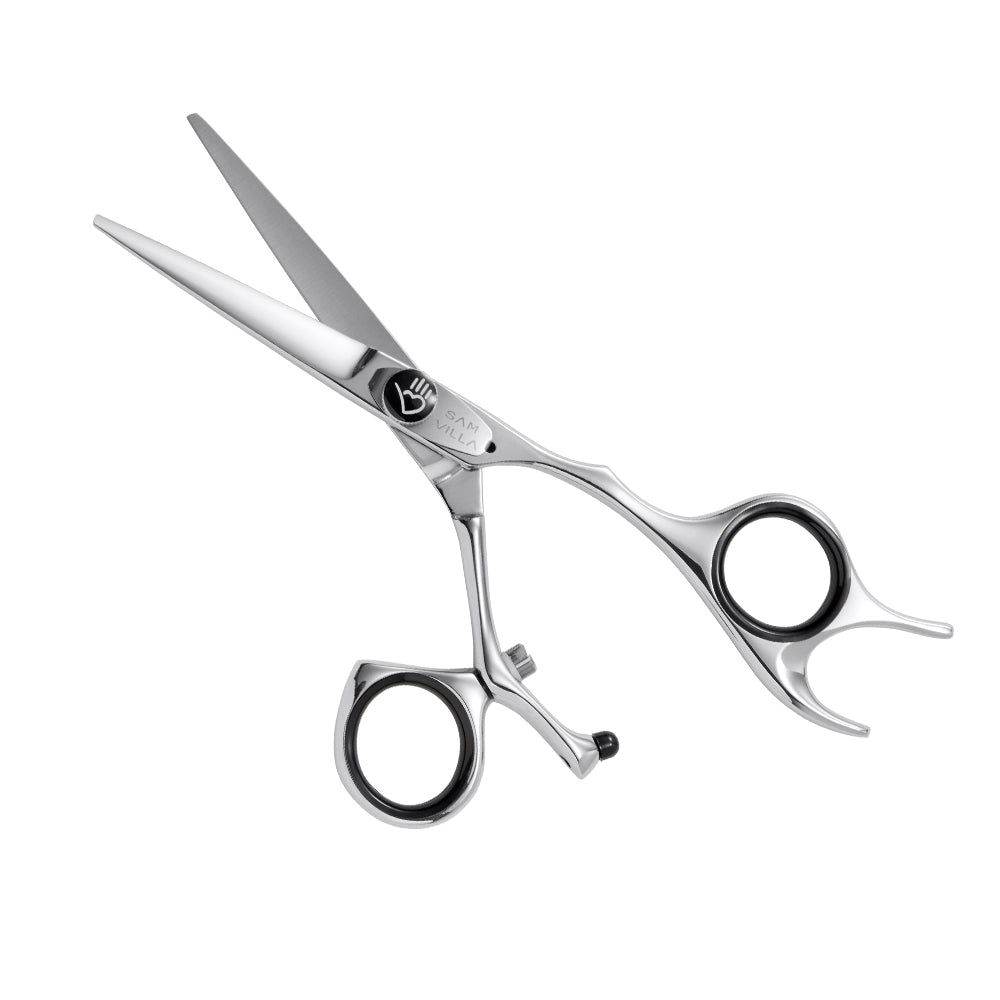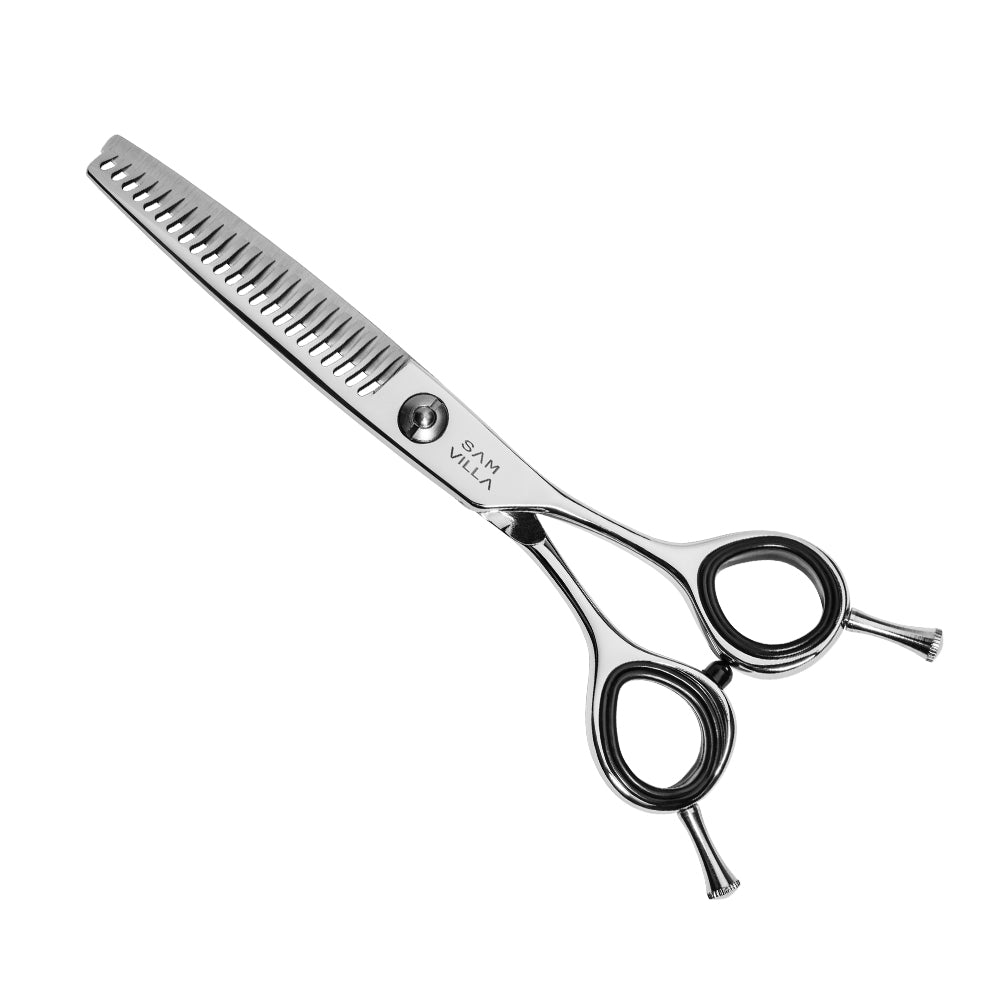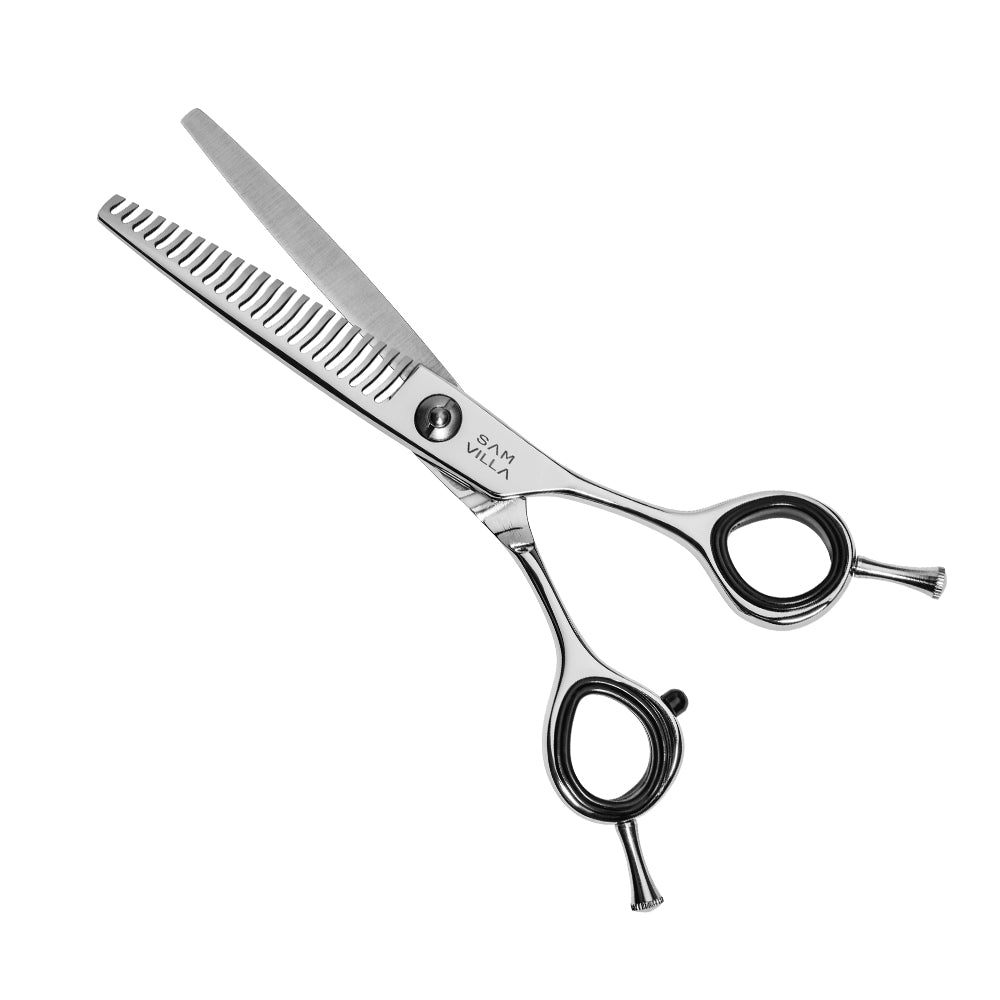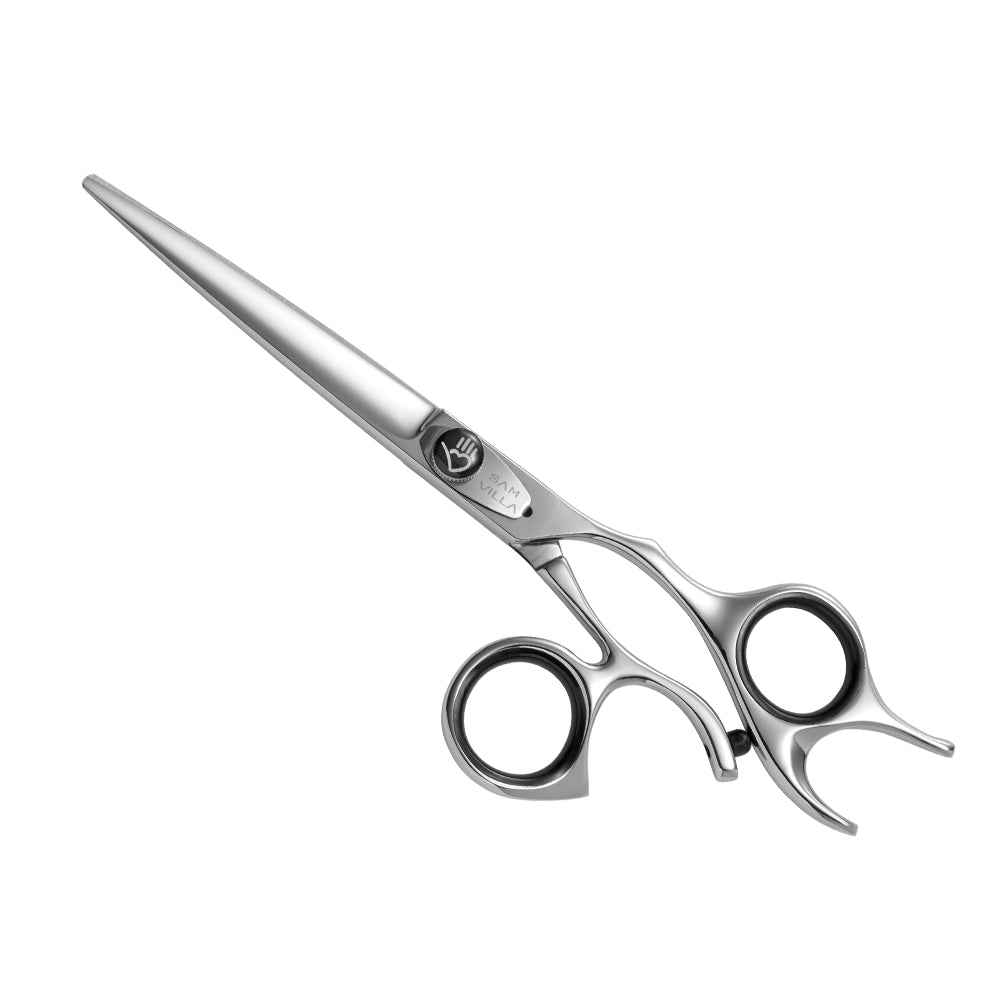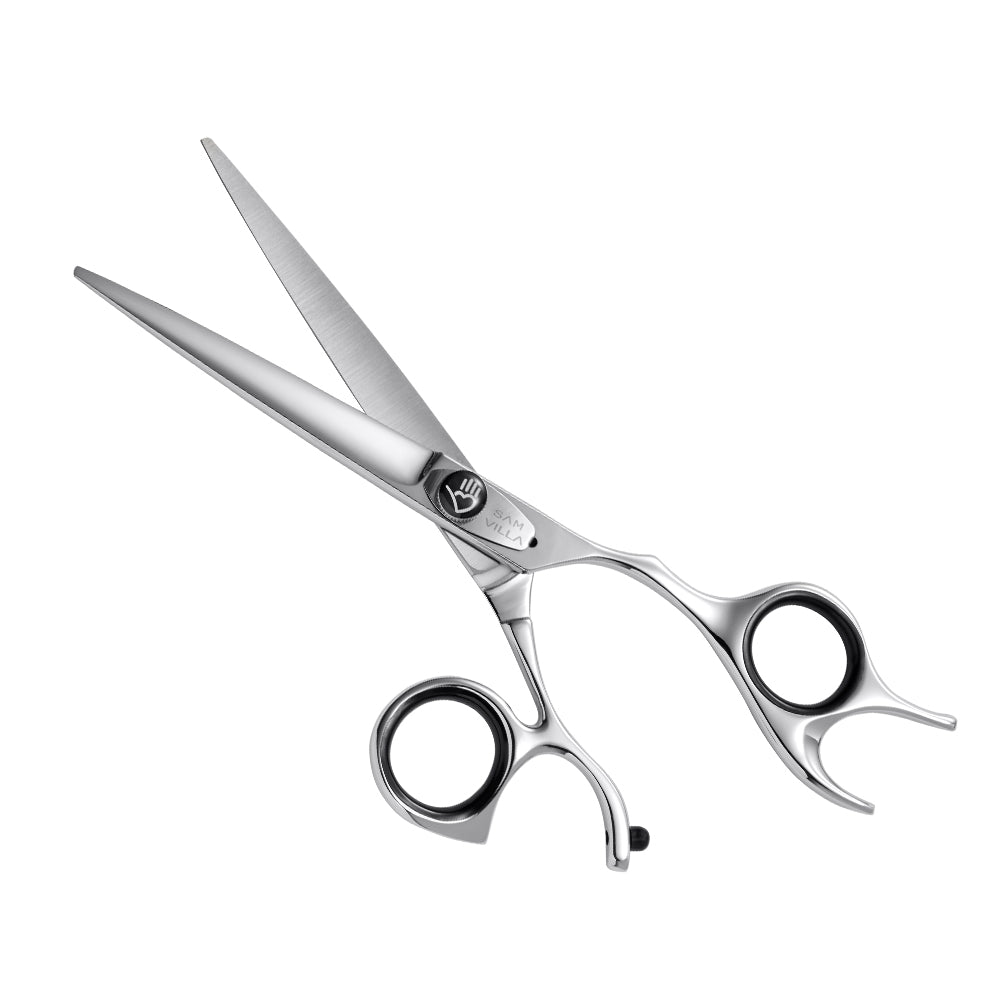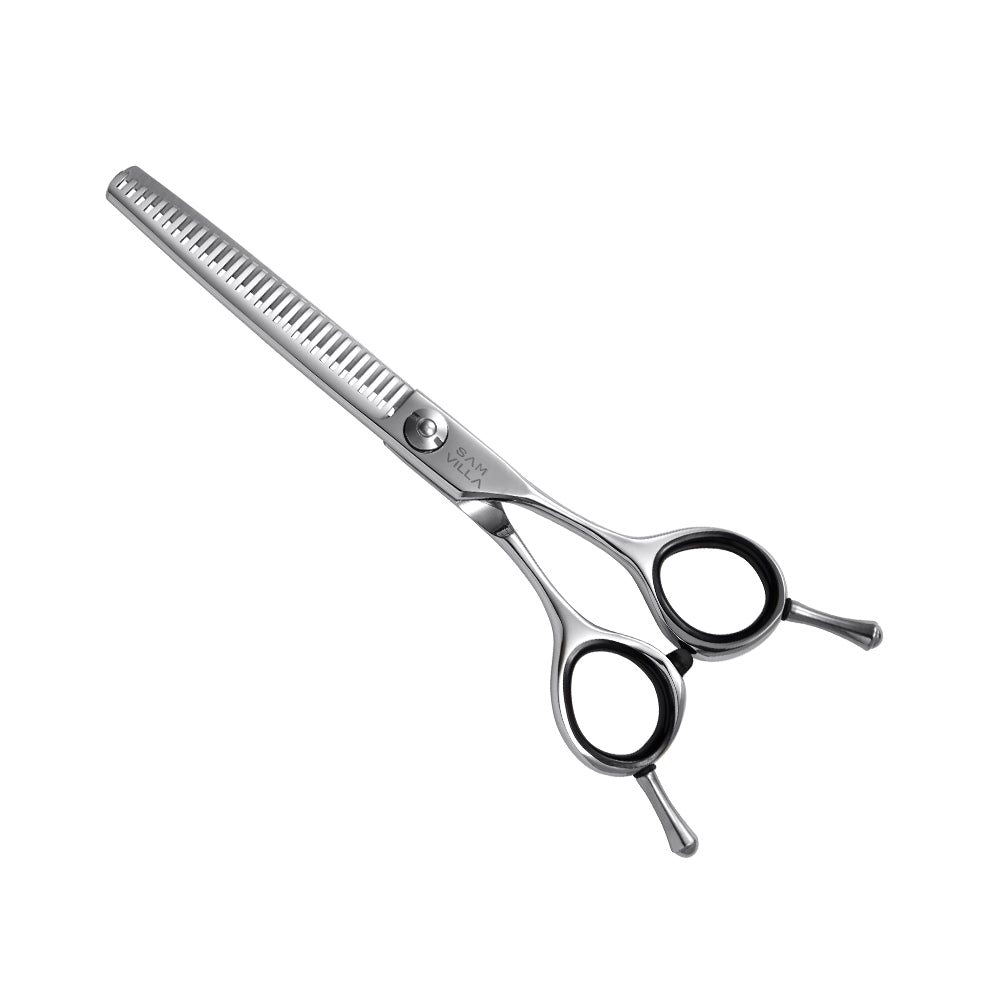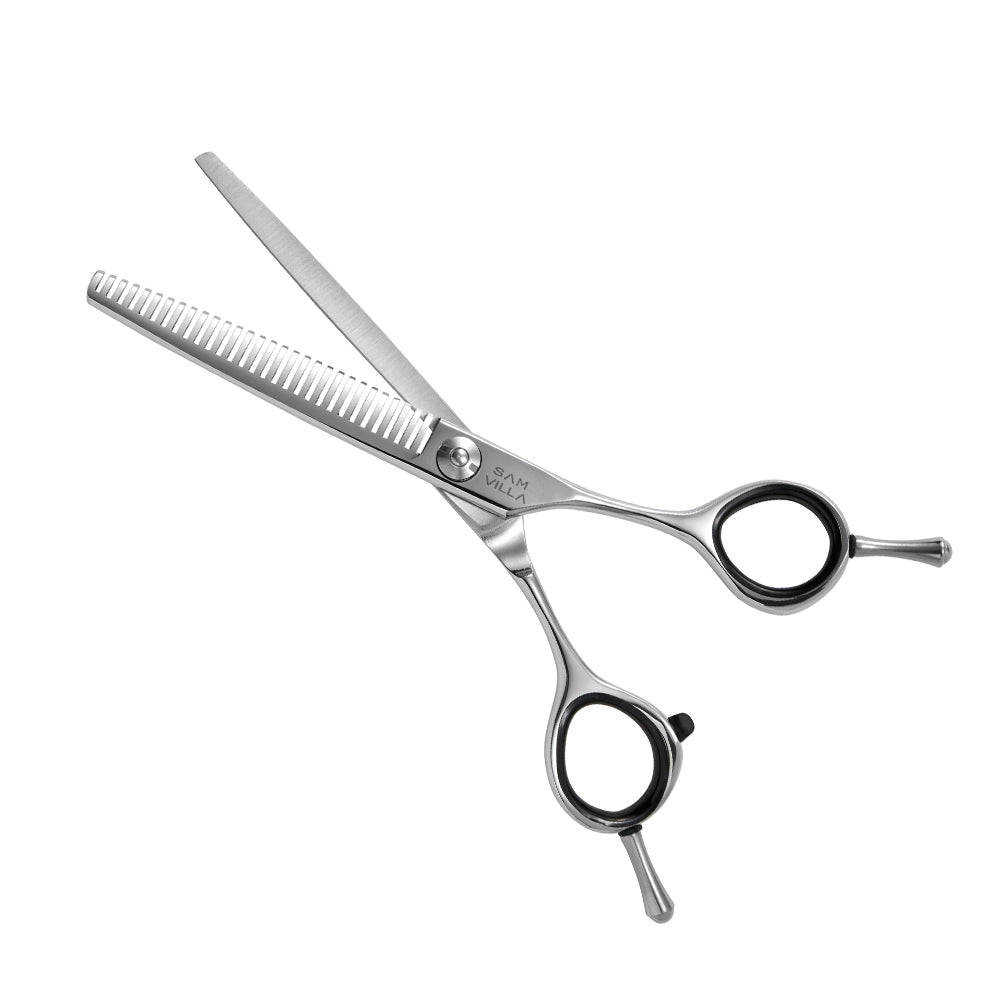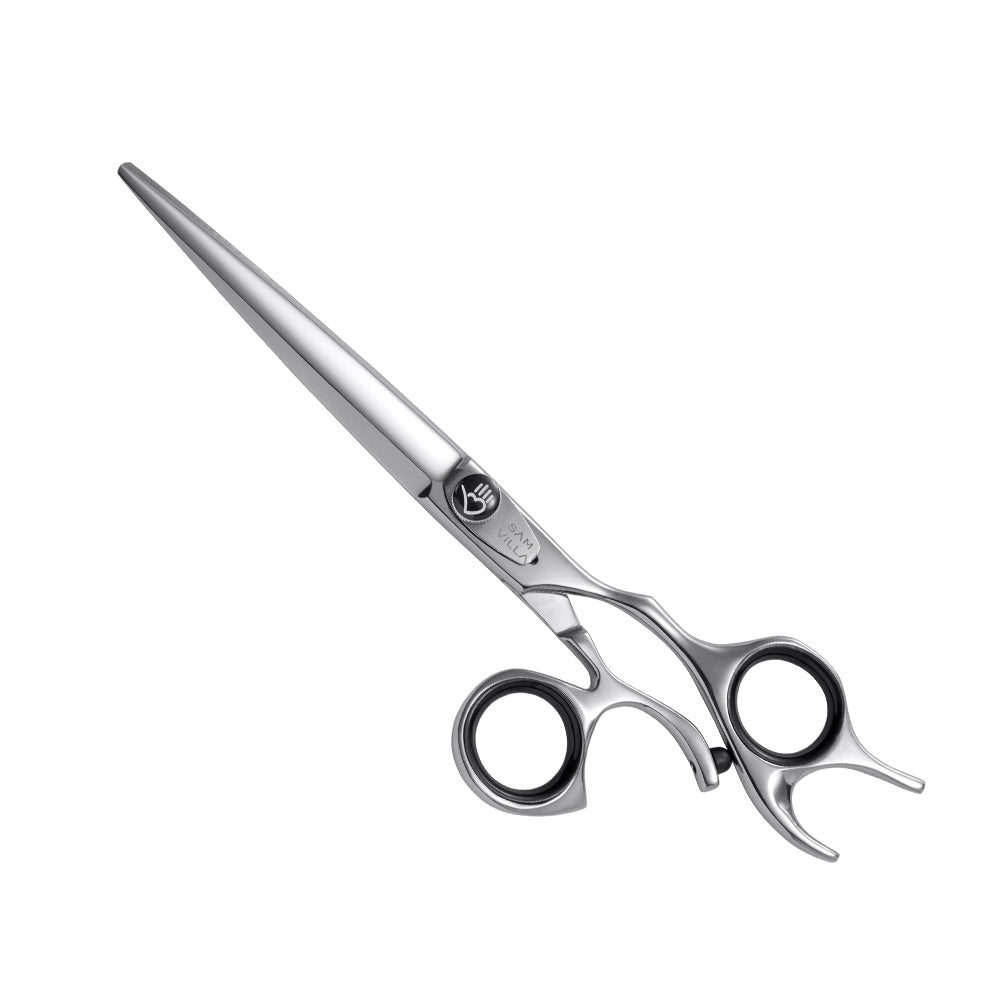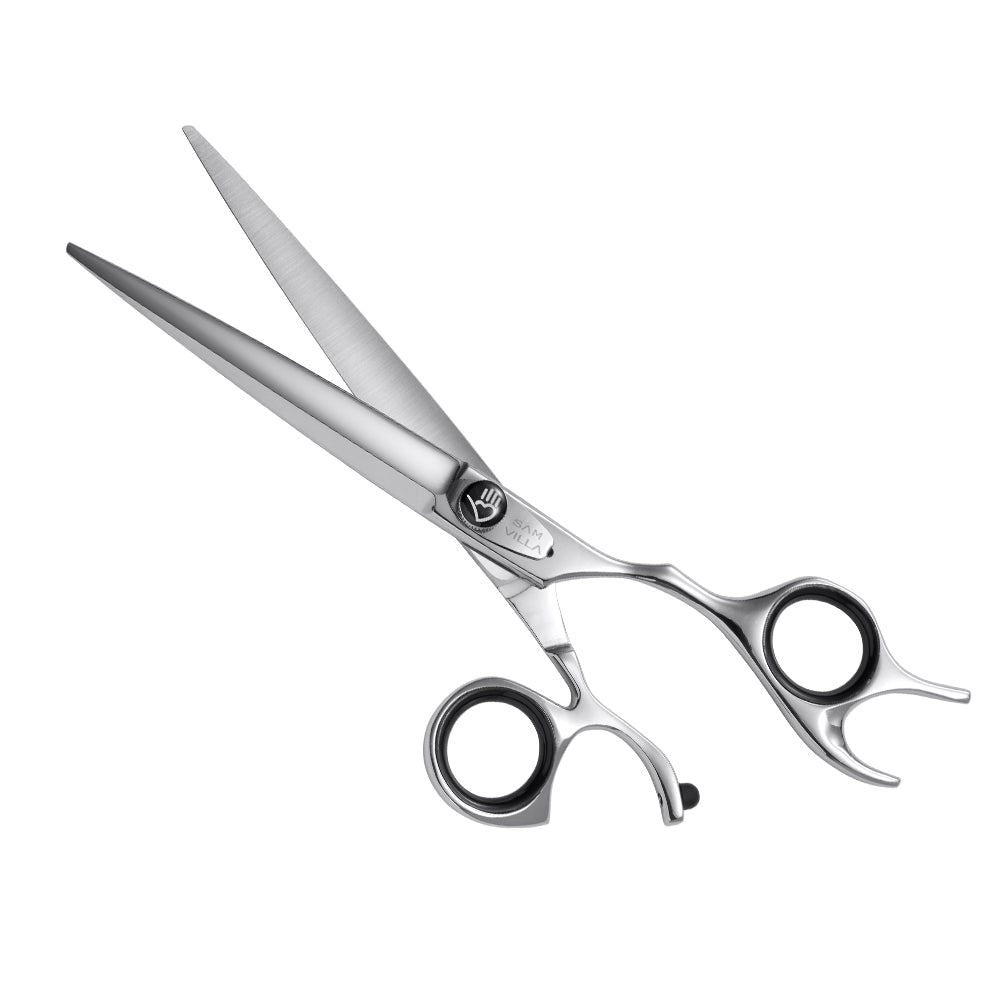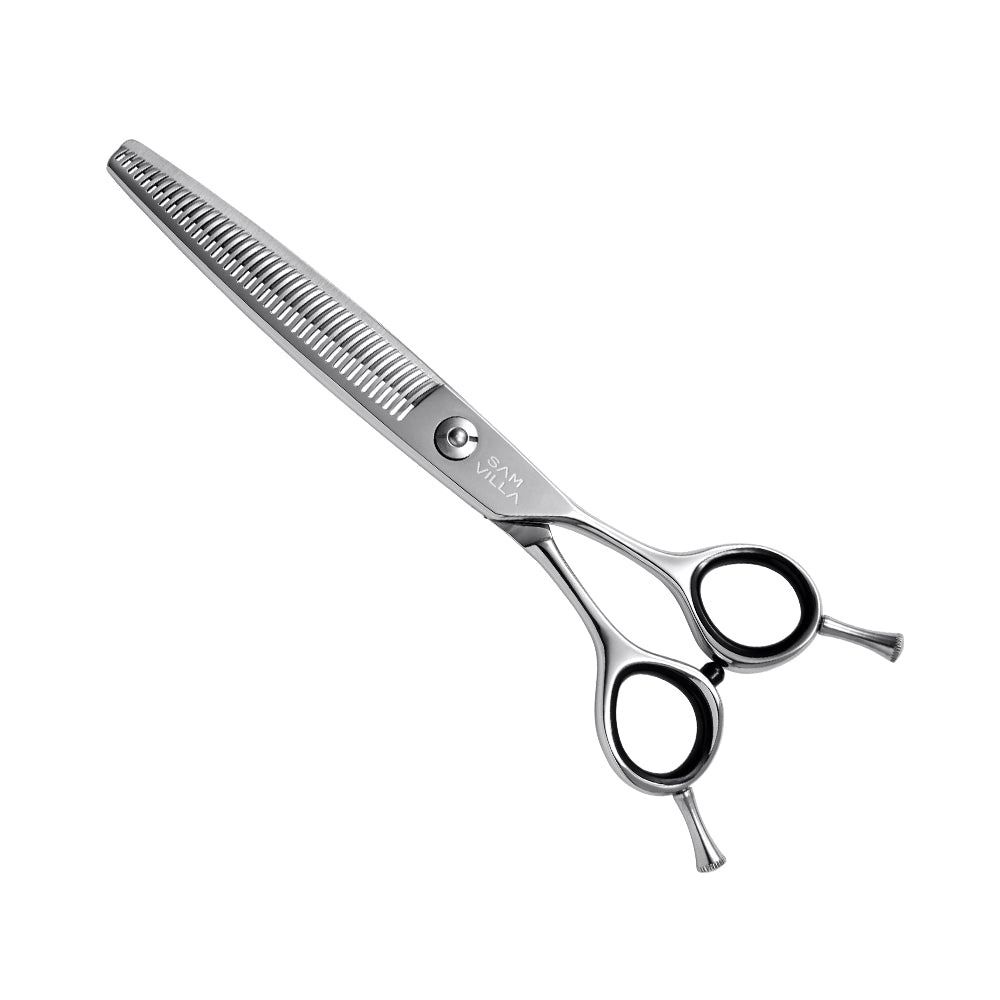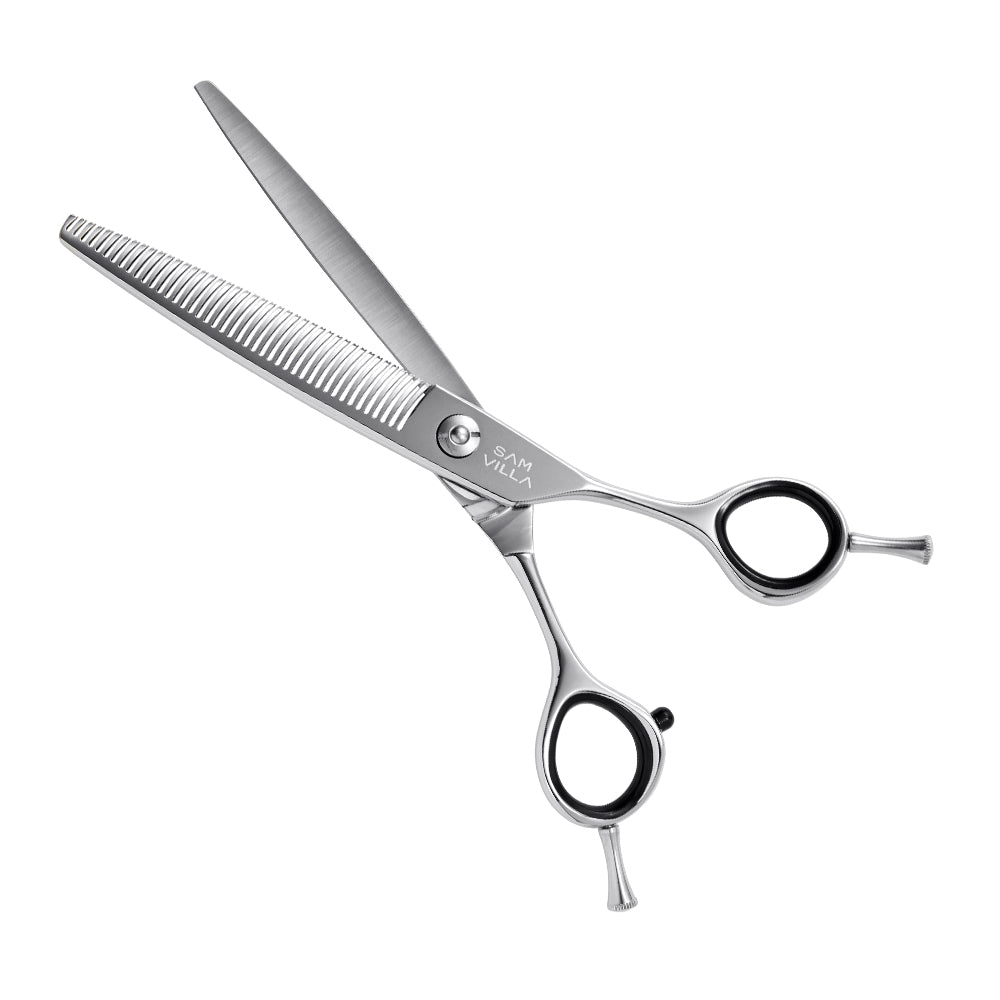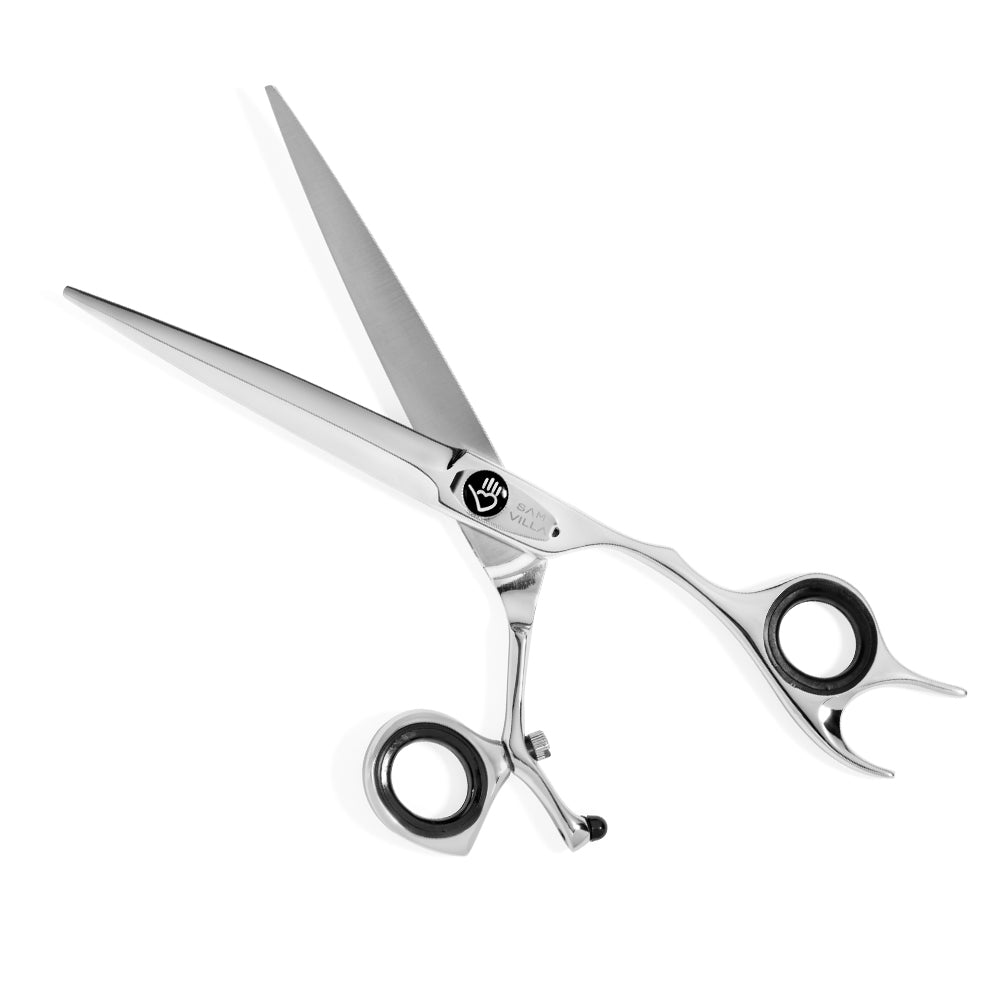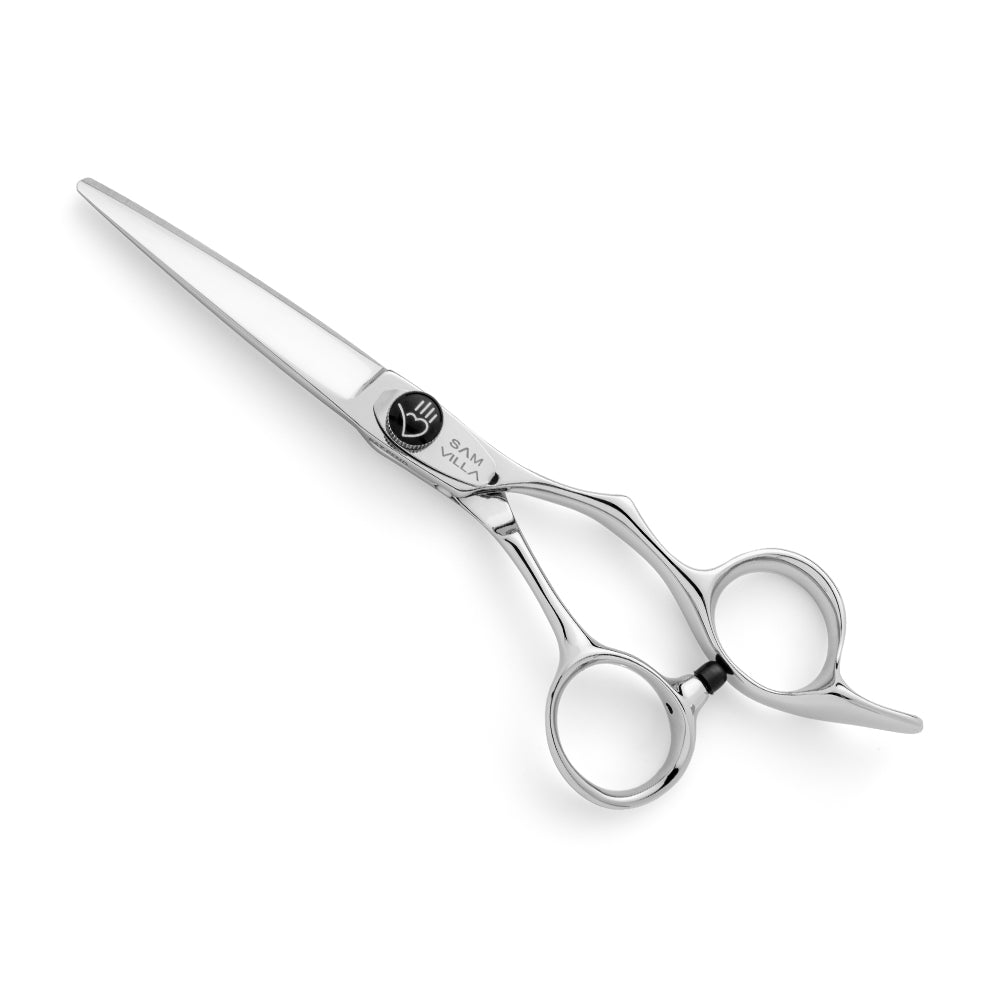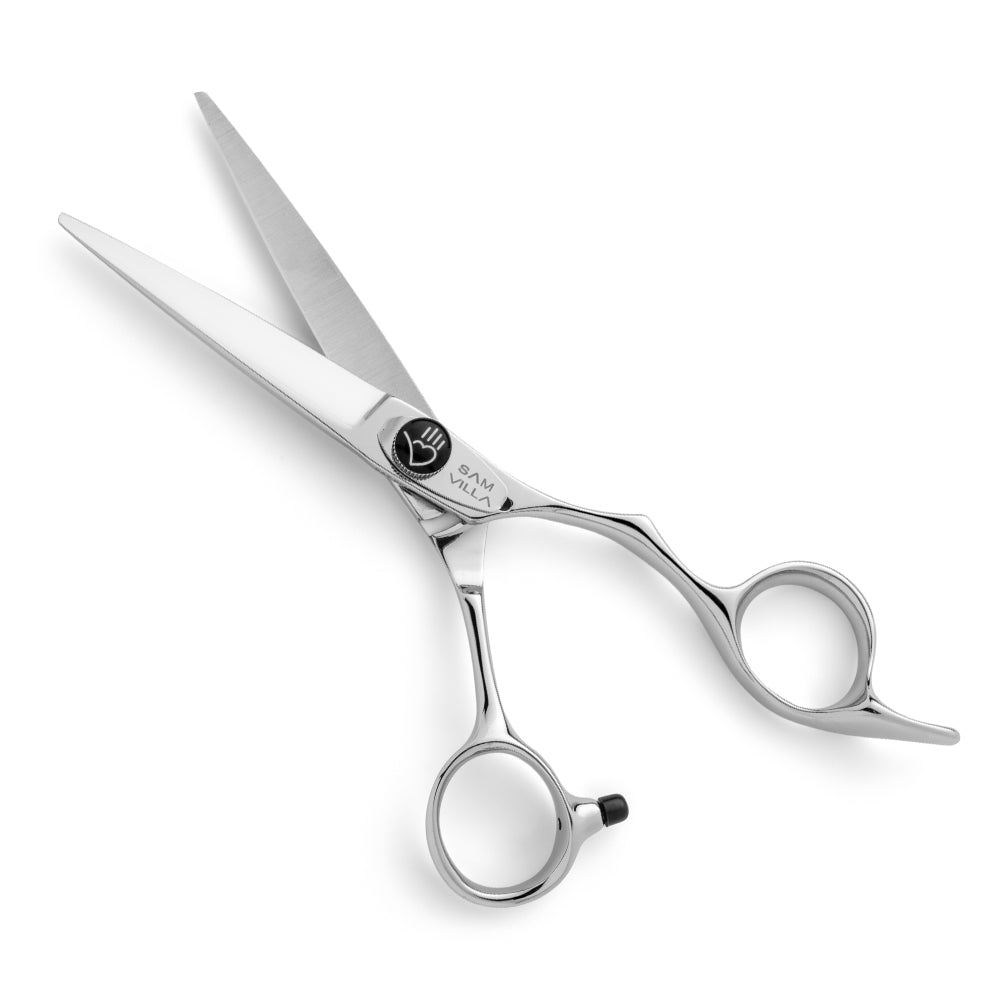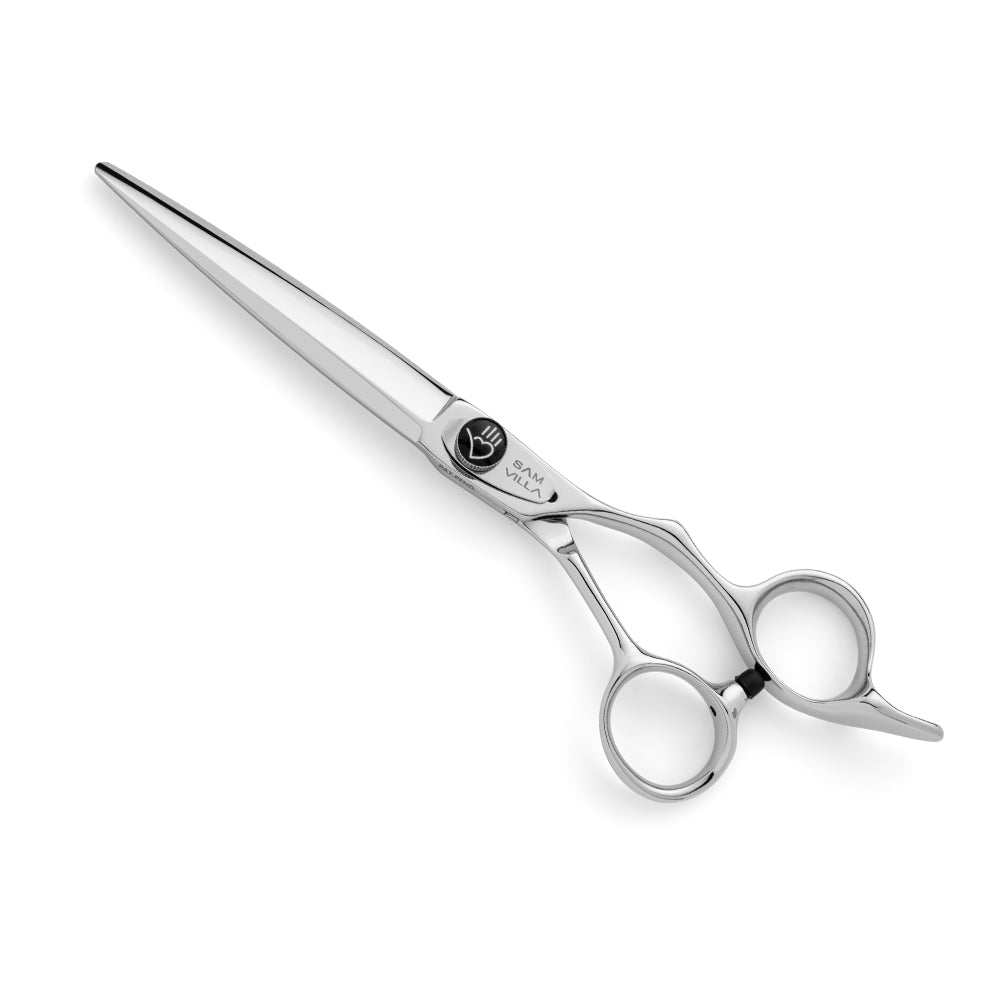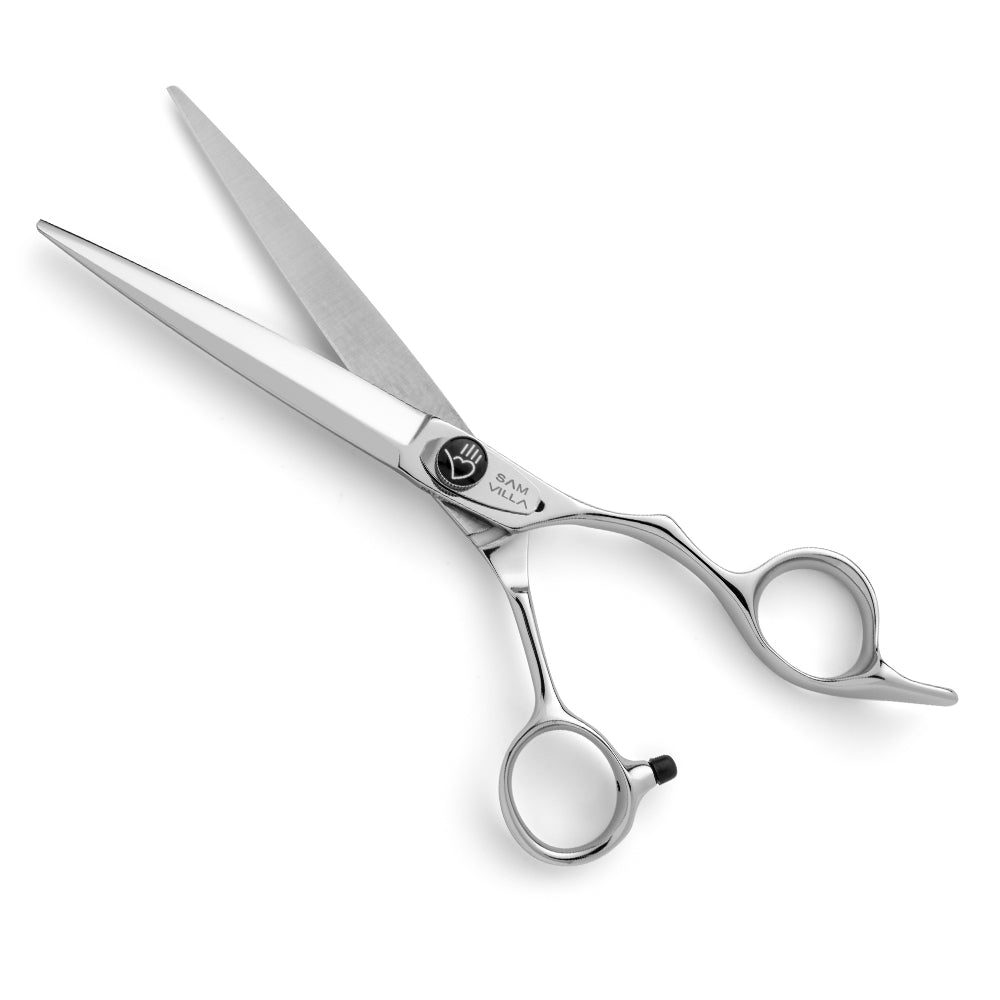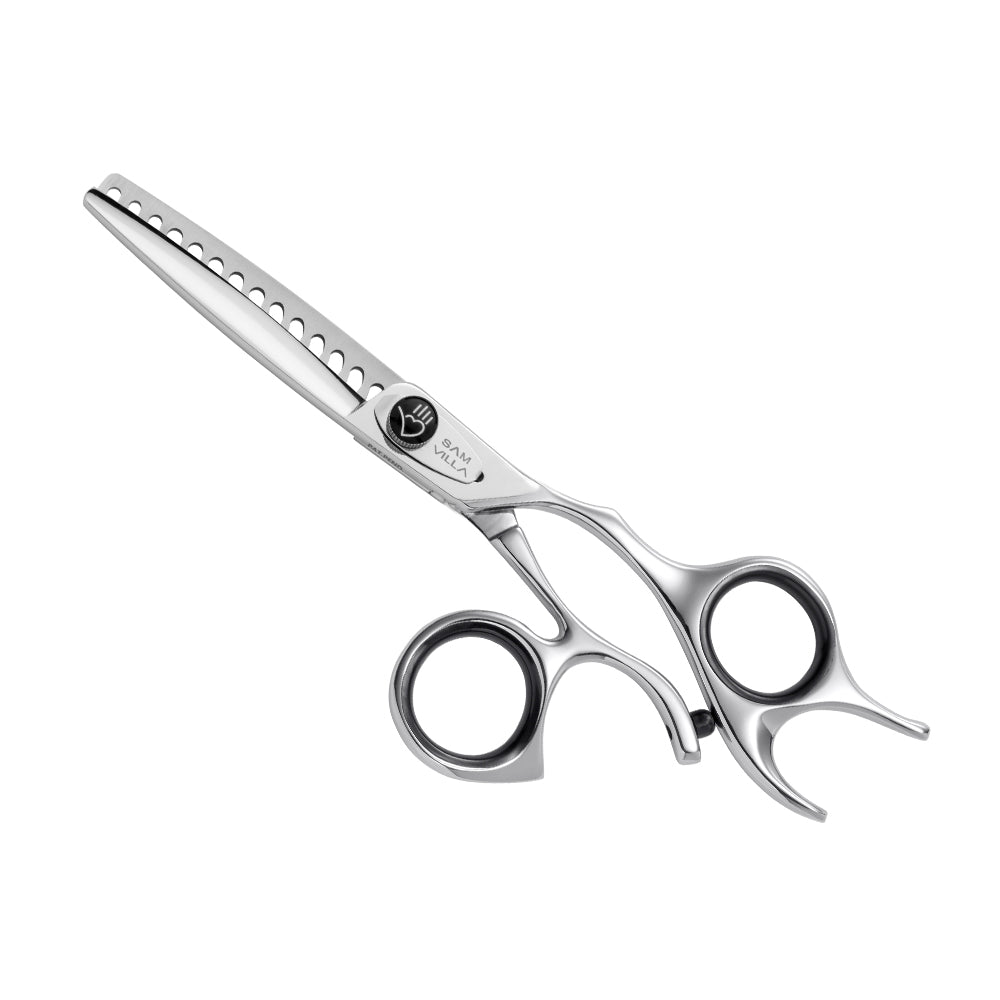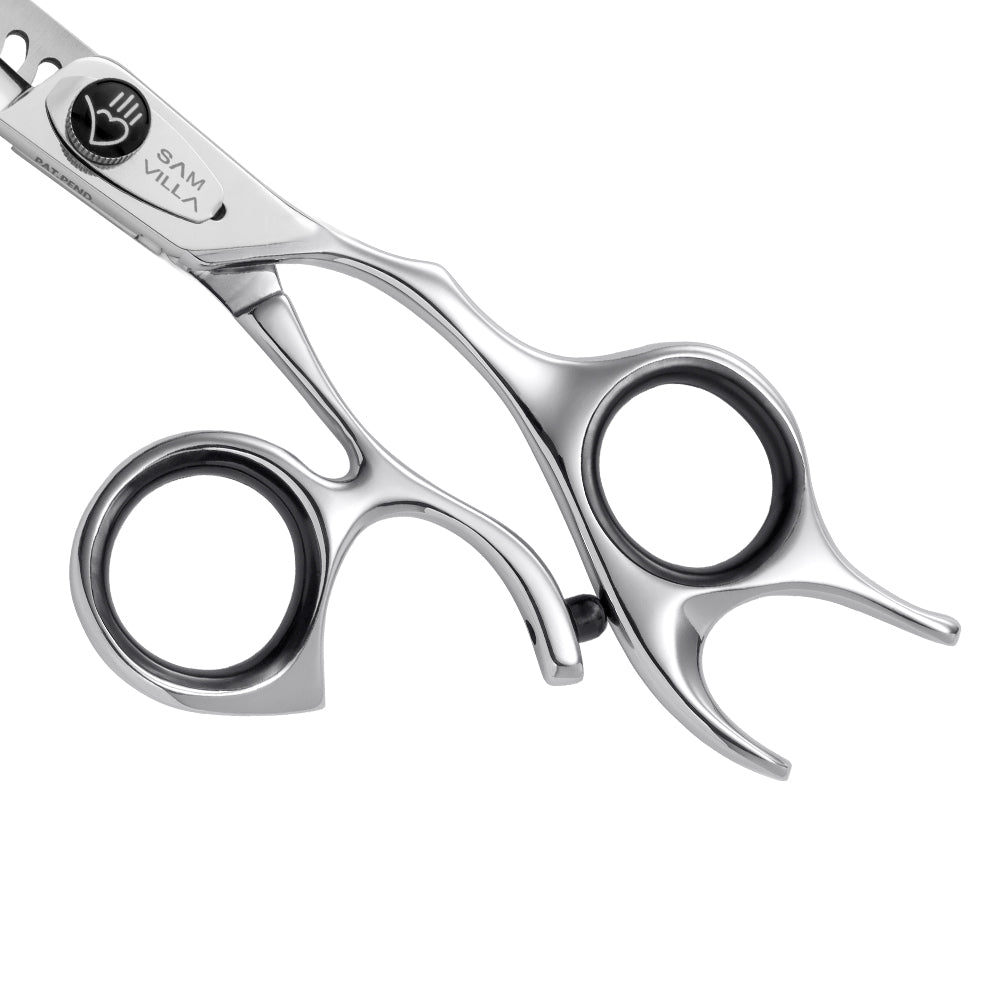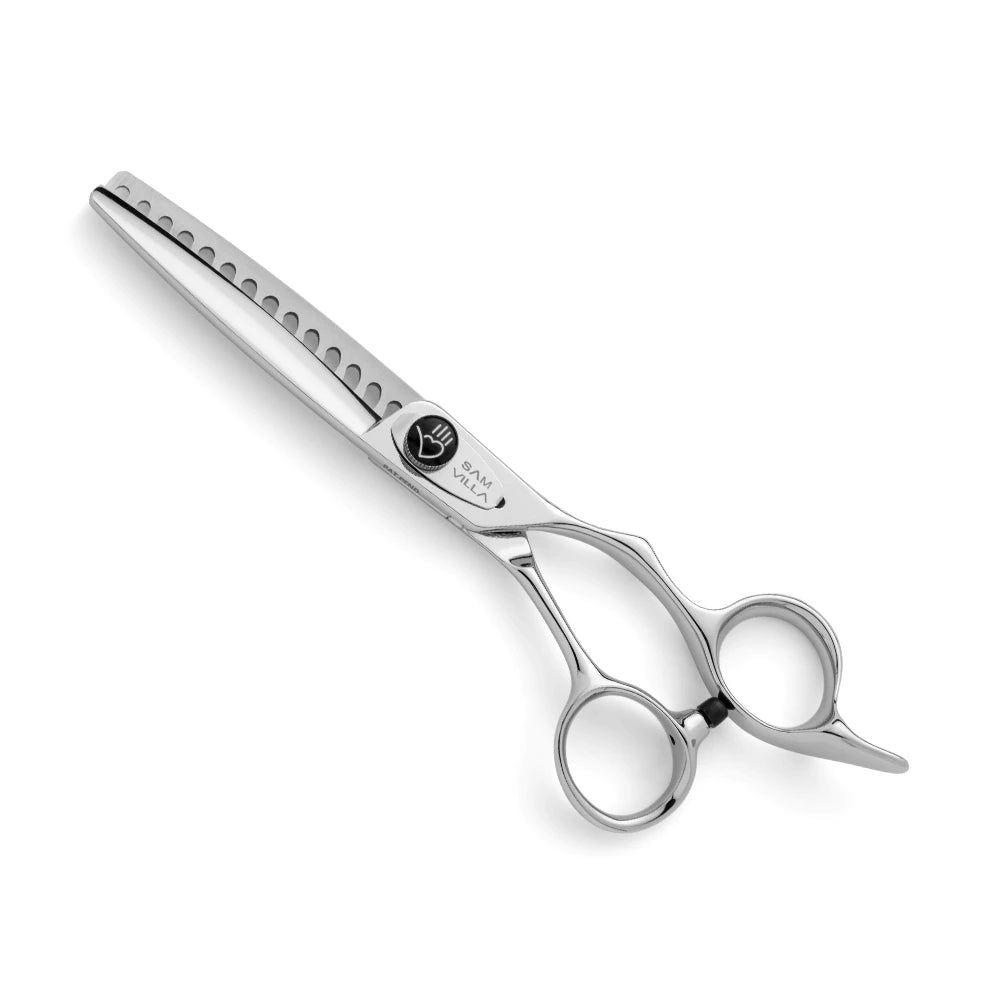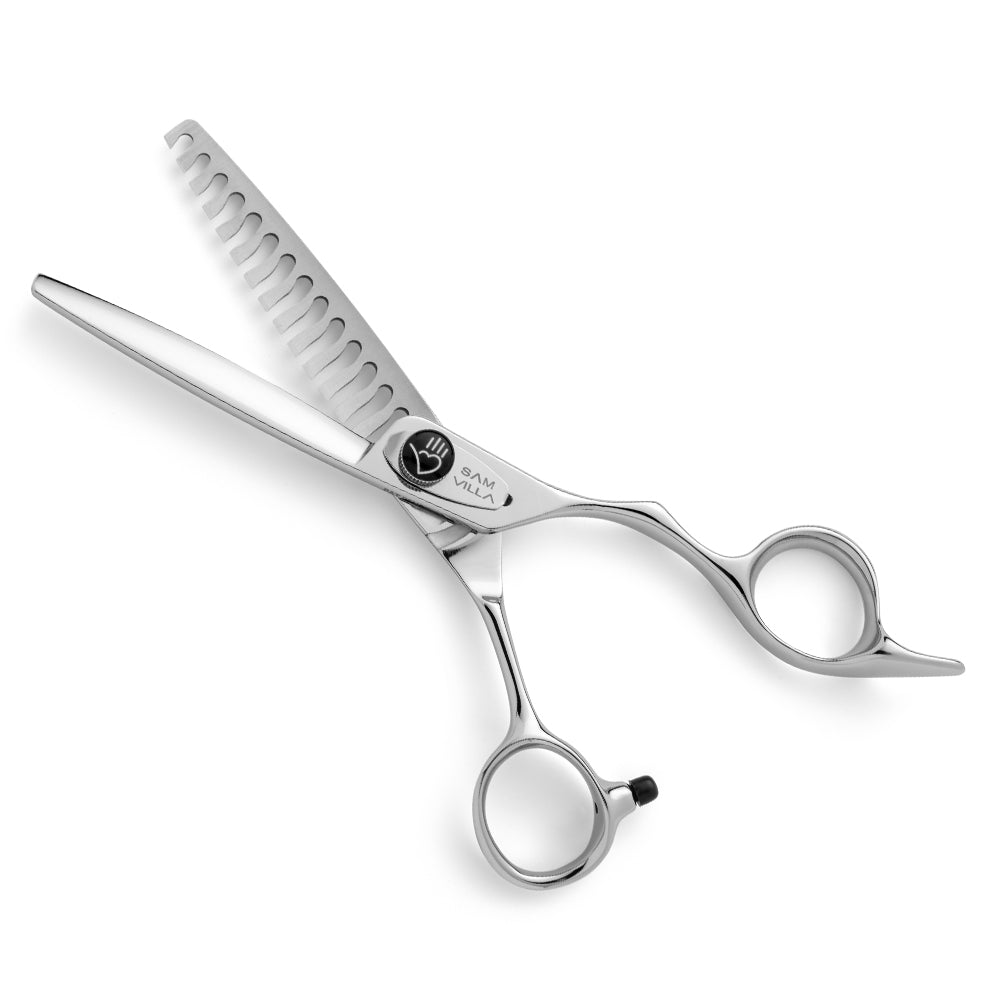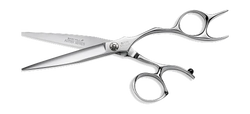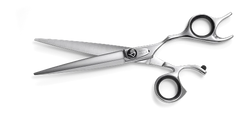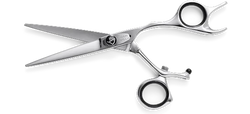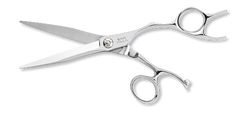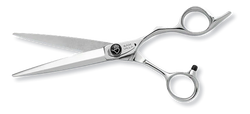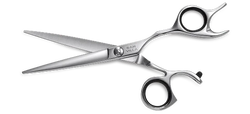*BLACK FRIDAY: Discount automatically applied at checkout. Promotion excludes select products, items already on promotion, gift cards, cutting stools, value sets/client-ready kits, and mannequin heads. Cannot be combined with other codes or offers. Other restrictions may apply. Offers subject to change without notice. While supplies last. Valid 11.20.25 – 11.30.25.
*Giveaway Terms: All orders placed 11.01.25 – 12.04.25 are automatically entered for a chance to win a 1-hour LIVE Zoom Q&A with Sam Villa. No purchase necessary—see official rules for details. Winner selected via ViralSweep on 12.05.25, notified by 12.08.25, and announced on or about 12.09.25. U.S. residents only; 18+. Void where prohibited.
Which Shear Is Right for You?
Feature
Artist
Series
Size
6.25"
Shear: 6.25"
Slide Cutting: 6"
Recommended For
Wet & Dry Cutting
Handle Design
Crane Handle
Forward-Set Thumb
Steel Type
6.25" Shear: Molybdenum Alloy Steel & Cobalt. Slide Cutting: Molybdenum Alloy Steel (440C)
Rockwell Hardness
6.25" Shear: 60-61
Slide Cutting: 58-60
Blade Type
Convex
Tension System
Flat Line
Available In
Right Handed
Signature
Series
Size
5.75"
6.25"
7"
Recommended For
Wet & Dry Cutting
Handle Design
Crane Handle
Forward-Set Thumb
Steel Type
Molybdenum Alloy Steel (440C)
Rockwell Hardness
58-60
Blade Type
Convex
Tension System
True Balance
Ball Bearing
Available In
Right & Left Handed
Signature
Series Swivel
Size
5.5"
6"
7"
Recommended For
Wet & Dry Cutting
Handle Design
Crane Handle
Swivel Thumb
Steel Type
Molybdenum Alloy Steel (440C)
Rockwell Hardness
58-60
Blade Type
Convex
Tension System
True Balance
Ball Bearing
Available In
Right & Left Handed
Streamline
Series
Size
5.5"
6.25"
6.75"
Recommended For
Wet & Dry Cutting
Handle Design
Crane Handle
Forward-Set Thumb
Steel Type
Molybdenum Alloy Steel (440C)
Rockwell Hardness
58-60
Blade Type
Convex
Tension System
Flat Line
Available In
Right & Left Handed
Classic
Series
Size
5.5"
6"
6.25"
7"
Recommended For
Wet & Dry Cutting
Handle Design
Traditional
Semi-Offset Handle
Slight Offset Thumb
Steel Type
Molybdenum Alloy Steel (440C)
Rockwell Hardness
58-60
Blade Type
Convex
Tension System
Flat Line
Available In
Right & Left Handed
-
Motor Type
-
Heat & Speed Settings
-
Ionic Technology
-
Cord Length
-
Best For
-
Special Features
-
Feature 7
-
Feature 8
Size
6.25"
Shear: 6.25"
Slide Cutting: 6"
Recommended For
Wet & Dry Cutting
Handle Design
Crane Handle
Forward-Set Thumb
Steel Type
6.25" Shear: Molybdenum Alloy Steel & Cobalt. Slide Cutting: Molybdenum Alloy Steel (440C)
Rockwell Hardness
6.25" Shear: 60-61
Slide Cutting: 58-60
Blade Type
Convex
Tension System
Flat Line
Available In
Right Handed
-
Motor Type
-
Heat & Speed Settings
-
Ionic Technology
-
Cord Length
-
Best For
-
Special Features
-
Feature 7
-
Feature 8
Size
5.75"
6.25"
7"
Recommended For
Wet & Dry Cutting
Handle Design
Crane Handle
Forward-Set Thumb
Steel Type
Molybdenum Alloy Steel (440C)
Rockwell Hardness
58-60
Blade Type
Convex
Tension System
True Balance
Ball Bearing
Available In
Right & Left Handed
-
Motor Type
-
Heat & Speed Settings
-
Ionic Technology
-
Cord Length
-
Best For
-
Special Features
-
Feature 7
-
Feature 8
Size
5.5"
6"
7"
Recommended For
Wet & Dry Cutting
Handle Design
Crane Handle
Swivel Thumb
Steel Type
Molybdenum Alloy Steel (440C)
Rockwell Hardness
58-60
Blade Type
Convex
Tension System
True Balance
Ball Bearing
Available In
Right & Left Handed
-
Motor Type
-
Heat & Speed Settings
-
Ionic Technology
-
Cord Length
-
Best For
-
Special Features
-
Feature 7
-
Feature 8
Size
5.5"
6.25"
6.75"
Recommended For
Wet & Dry Cutting
Handle Design
Crane Handle
Forward-Set Thumb
Steel Type
Molybdenum Alloy Steel (440C)
Rockwell Hardness
58-60
Blade Type
Convex
Tension System
Flat Line
Available In
Right & Left Handed
-
Motor Type
-
Heat & Speed Settings
-
Ionic Technology
-
Cord Length
-
Best For
-
Special Features
-
Feature 7
-
Feature 8
Size
5.5"
6"
6.25"
7"
Recommended For
Wet & Dry Cutting
Handle Design
Traditional
Semi-Offset Handle
Slight Offset Thumb
Steel Type
Molybdenum Alloy Steel (440C)
Rockwell Hardness
58-60
Blade Type
Convex
Tension System
Flat Line
Available In
Right & Left Handed
-
Motor Type
-
Heat & Speed Settings
-
Ionic Technology
-
Cord Length
-
Best For
-
Special Features
-
Feature 7
-
Feature 8
Size
5.5"
6"
Recommended For
Wet & Dry Cutting
Handle Design
Crane Handle
Forward-Set Thumb
Steel Type
Stainless Steel (440C)
Rockwell Hardness
58-60
Blade Type
Convex
Tension System
Click Set
Streamline
Available In
Right & Left Handed



